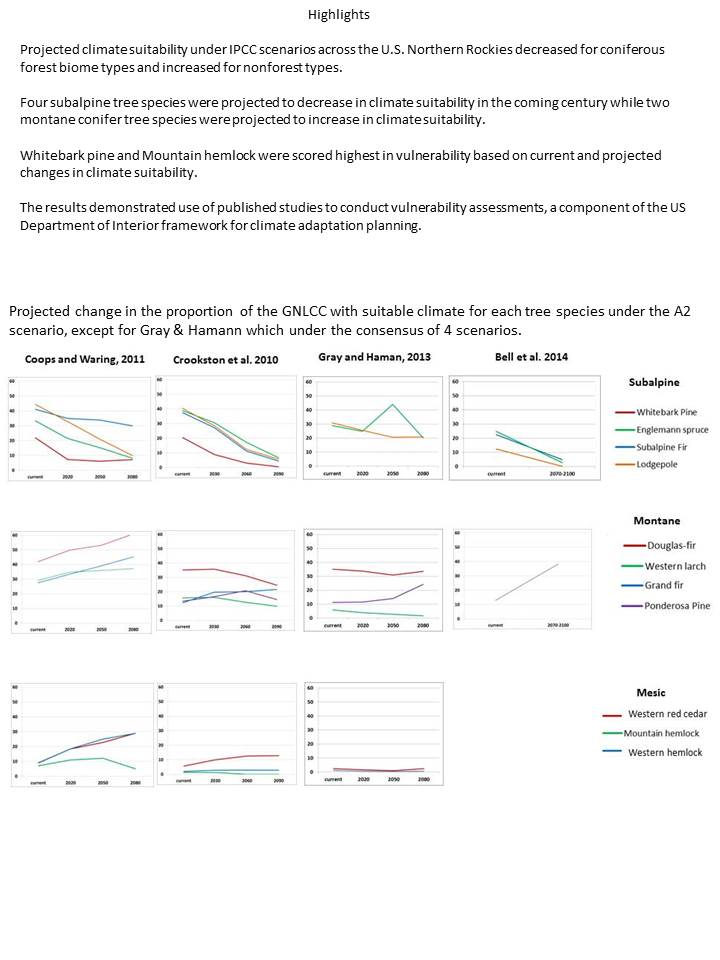Which tree species and biome types are most vulnerable to climate change in the US Northern Rocky Mountains?, Forest Ecology and Management
Authors
Andrew J. Hansen and Linda Phillips
Resulting Manuscript
Hansen, A.J. and L.B. Phillips,in press. Which tree species and biome types are most vulnerable to climate change in the US Northern Rocky Mountains?, Forest Ecology and Management
Abstract
Federal resource managers are increasingly charged with developing strategies for dealing with climate change. Managers can best plan, orient research, and manage if they are able to anticipate which species and ecosystems are most vulnerable to possible future change. Several published studies have projected the potential impacts of future climate change on plant species and communities using bioclimate envelope modeling. This method quantifies the climate conditions where a species is present and projects the locations of these climate conditions under future scenarios. It is an appropriate starting point for climate adaptation planning because climate suitability is a critical filter for deciding where to apply management actions under climate change. The goal of this study is to assess components of vulnerability of tree species and biome types to projected future climate within the Great Northern Landscape Conservation Cooperative (GNLCC) in the US Northern Rockies and the ecosystems surrounding Glacier and Yellowstone/Grand Teton National Parks. We drew on the results of five published studies and analyzed current and projected future climate suitability for 11 tree species and 8 biome types under two IPCC emissions scenarios: A2, a relatively high greenhouse gas emissions scenario and B1, the lowest emissions scenario. We assessed components of vulnerability based on four metrics of current and projected future climate suitability. Results for biome types indicated largely a shift from climates suitable for alpine and subalpine conifer to climates suitable for desert scrub and grassland types. Results from the four studies of tree species indicated substantial loss of area of climate suitability for the four subalpine species by 2100. This was especially true for Whitebark pine (Pinus albicaulis). Suitable climate for this species dropped from just over 20% of the study area in the reference period to 0.5-7.0% by 2070-2100 under the A2 scenario. The studies agreed in projecting expansion of climate suitability for some montane tree species but disagreed on expansion of climate suitability of west-side mesic tree species to eastside locations such as Yellowstone National park. The ranking of tree species vulnerability were similar among studies, scenarios, and geographic areas and indicated highest vulnerability for Whitebark pine and Mountain hemlock (Tsuga mertensiana). The results should help to federal managers in the GNLCC to prioritize tree species for climate adaptation strategies. Our methods can be used to harness existing bioclimate envelope studies to assess vulnerability within other LCCs across the US and other management units internationally.

updated August 26, 2014
